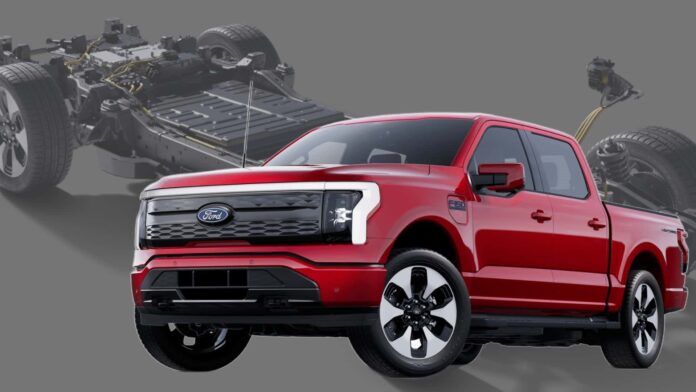
Ford’s top electric vehicle engineer said on Wednesday that the automaker is actively working on a “game-changing” battery chemistry for its future EVs. The breakthrough will reportedly enable low-cost and longer-range Ford EVs by the end of the decade.
Charles Poon, the director of electrified propulsion engineering at Ford said his team has developed a lithium manganese rich (LMR) cell chemistry at its Ion Park battery research and development center in Romulus, Michigan. Ford is now already producing a second generation of these cells on a pilot line in Michigan.
Poon said in a LinkedIn post that LMR has several advantages over nickel-based chemistries. That includes improved safety and stability and more energy density leading to a longer driving range compared to high-nickel batteries. He also added that Ford is expecting “unprecedented” cost reduction and the breakthrough was critical to achieving “true cost parity” with gas-powered vehicles.
Photo by: Ford
Ford’s lithium manganese rich (LMR) cells rolling out of a pilot production line in Michigan.
“Ford started by offering nickel-manganese-cobalt (NMC) batteries and later added lithium-iron-phosphate (LFP) batteries in 2023. LMR is the answer to ‘what next?'” Poon said. “This isn’t just a lab experiment. We’re actively working to scale LMR cell chemistry and integrate them into our future vehicle lineup within this decade,” he added.
Lithium-rich manganese-based cathode materials were discovered 30 years ago, according to a study published in the academic journal Science Direct. Theoretically, they offer superior energy density and cost advantages due to the elimination of nickel and cobalt, which are both dirty to produce and expensive. LMR cells also offer high working voltage initially.
But that’s where the pros end. Despite the chemistry existing for three decades, it hasn’t been commercialized due to voltage attenuation, which means a substantial loss in voltage over time. LMR also suffers from severe capacity loss, which could lead to reduced driving range and thermal stability degradation, which means the cells may not be safe when the mercury climbs.
Since Ford is already producing these cells on a pilot line, it might have found solutions to these problems. But details of this project are scarce right now. Automakers and battery companies tend to be tight-lipped about their product plans, treating them as heavily guarded secrets. We may not learn a whole lot more about Ford’s plans for a while.
Photo by: Ford
Ford currently uses an LFP battery on the base version of the Mustang Mach-E and NMC batteries on the rest of the line-up, including for the E-Transit and F-150 Lightning. Several new models are in the pipeline, including a compact SUV and truck under its “skunkworks” affordable EV project and the next generation of its electric truck which is codenamed T3.
The automaker is also working on extended-range electric vehicle (EREV) versions of its SUVs, crossovers and the Super Duty pickup. Novel chemistries aren’t theoretically limited to a specific type of vehicle or powertrain, and can be used in hybrids, PHEVs, EREVs and BEVs, depending on what makes the most economical sense.
Contact the author: suvrat.kothari@Insideevs.com


